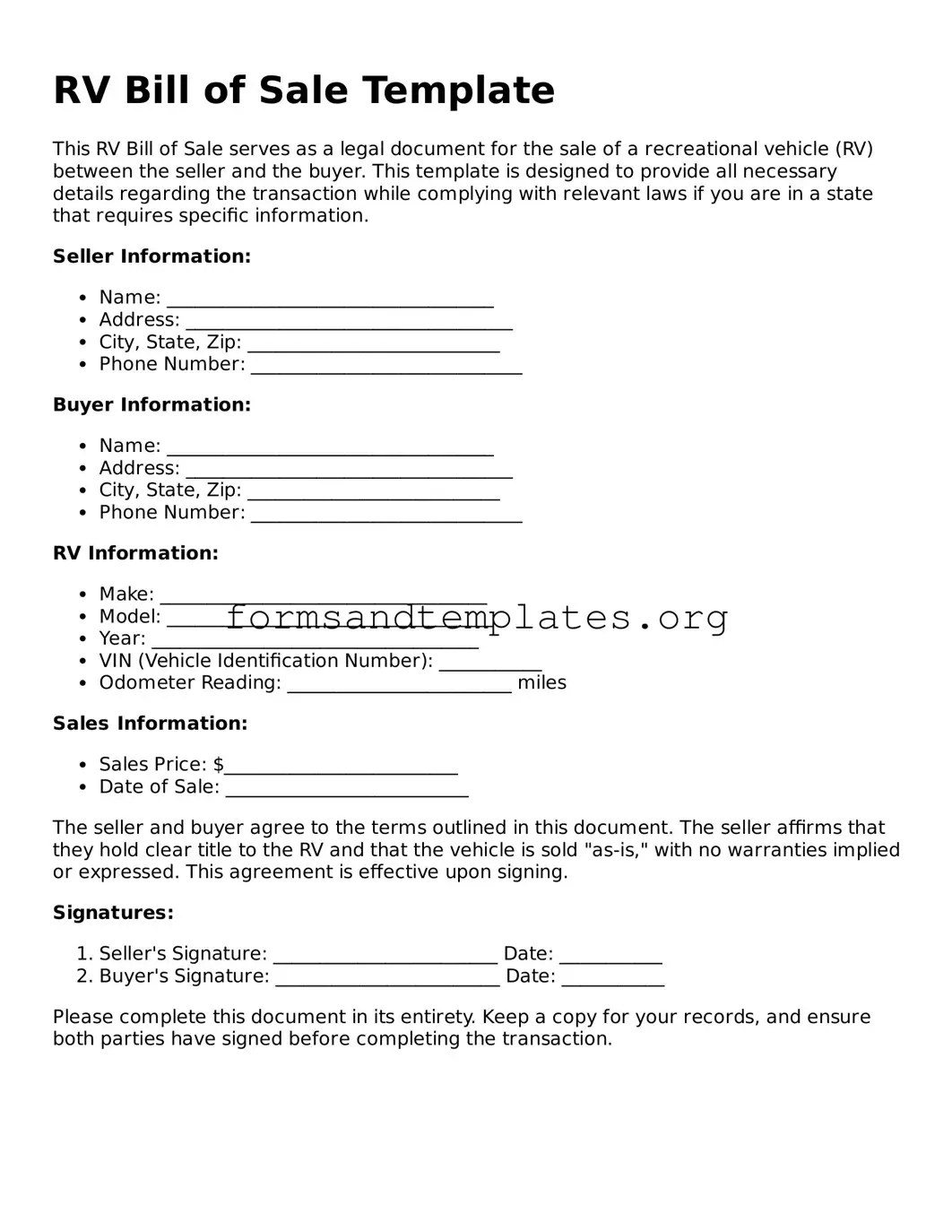Attorney-Verified RV Bill of Sale Template
An RV Bill of Sale form is a legal document that serves as proof of the sale and transfer of ownership of a recreational vehicle. This form outlines the details of the transaction, including the buyer and seller's information, vehicle description, and purchase price. Completing this form is essential for both parties to ensure a smooth transfer of ownership and to protect their rights.
To get started, fill out the form by clicking the button below.
Access Editor Here
